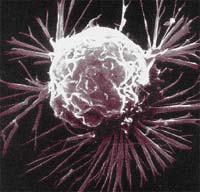Advantage tamoxifen
 though the factors responsible for a woman's risk of breast cancer have been known to the doctors for years, there was little they could possibly do except issue warnings and suggest preventive measures to cut down the chances of aggravating the disease. However, there has been little consensus on what to advise a woman standing a greater chance of developing the disease. No drug had been shown to reduce cancer rates among high-risk women and surgery carried numerous risks of its own.
though the factors responsible for a woman's risk of breast cancer have been known to the doctors for years, there was little they could possibly do except issue warnings and suggest preventive measures to cut down the chances of aggravating the disease. However, there has been little consensus on what to advise a woman standing a greater chance of developing the disease. No drug had been shown to reduce cancer rates among high-risk women and surgery carried numerous risks of its own.
However, according to the National Cancer Institute (nci), Bethesda, usa, there is now hope for the millions of breast-cancer patients. The nci claims that a drug, which has been around for the past two decades, can alter the incidence of the disease.This, in fact, is the first study in the world to show that the drug tamoxifen can actually reduce the incidence of breast cancer and is truly effective against this disease. The Breast Cancer Prevention Trial (bcpt) was started in April 1992 with a budget of us $50 million in more than 300 centres in the us and Canada. Moreover, the efficacy of the treatment was uniform in women of all age groups - from 39 years to 60 years and above.
Six years after its inception, the bcpt showed a remarkable reduction of over 45 per cent in breast cancer incidence among the high-risk participants who were taking tamoxifen regularly. And as a result, investigators released the initial study results on March 26, about 14 months earlier than expected, to enable the benefit of the research to be made accessible to the millions of breast-cancer patients the world over. They also notified all the 13,388 women participants of the research so that the women who had been taking the placebo could now consider initiating tamoxifen therapy. All the participants will continue to be followed by the National Surgical Adjuvant Breast and Bowel Project (nsabp), the Pittsburgh-based research network that conducted the trial with support from the nci.
The women inducted into the study were considered high-risk either due to family history, pre-cancerous lesions found on breast biopsy or just age. They were then assigned randomly to receive either tamoxifen or a placebo. After five years of treatment, the drug reduced the rate of expected breast cancers from 1 in every 130 women to 1 in 236. The drug treatment group had only 85 cases of invasive breast cancer as compared to 154 in the placebo group.
What the researchers do not yet know is if the risk of cancer is com-pletely eliminated, or whether it is only being delayed and the women will get it later in life. Whatever the case might be, the doctors agree that it is very good news indeed as far as their relentless combat against breast cancer is concerned. Breast cancer surgeons like Alison Eastabrook consider this is as of the most important breakthroughs against cancer in this decade. Eastabrook says that taking tamoxifen is like to taking aspirin for coronary diseases. Many physicians feel that a long-needed and more effective option for high-risk women is now available.
Discovered in 1961, tamoxifen - essentially an anti-oestrogen - has enjoyed a good track record, having been used in the treatment of breast cancer for more than a decade now. It is also quite inexpensive costing around rs 30 per 10 tablets. It has also been found to possess some beneficial side effects as well. Women in the drug treatment group had fewer bone fractures of the hip, wrist and spine. While there were only 47 instances of fractures in the tamoxifen group, over 71 women in the control group developed such orthopaedic problems.
Nevertheless, the treatment is not entirely risk-free. A powerful drug that affects the female hormone oestrogen, tamoxifen can induce menopause and has been shown to increase the risk of uterine cancer as well as blood clots in legs. But some women's health advocates argued the benefits of tamo-xifen clearly outweighed the other risks usually associated with the drug. Another problem is that the results may not apply to all women since there were very few minority women in the tamoxifen prevention trials.
Breast cancer is the most common cancer among women. In India, it is estimated that around 20 in 100,000 are at risk form this disease. The total number of patients suffering is a shocking 1.6 lakh. It's also the second-largest cause of cancer-related deaths in women, killing about 44,000 each year in the us alone. The mortality rate is quite high in India too, with over 60 per cent of women with cancer ultimately succumbing to the disease while a meagre 30 per cent can hope for a permanent cure.
However, for now, the doctors are being cautious. The nci director Richard Klusner says, "This is a real advance, but it is no magic bullet. Only through continued research will we find a drug that are even more effective and with fewer side effects." Meanwhile, the bcpt researchers are still analysing the data and formulating medical recommendations for its use as a possible preventive agent and publish in a scholastic journal. The nci is also planning a second trial to compare tamoxifen's performance with the other drugs like raloxifene currently available to fight the disease but which have fewer side effects.
